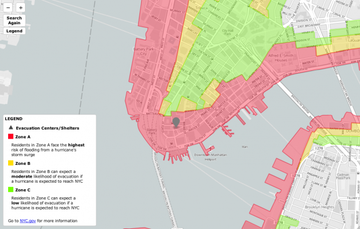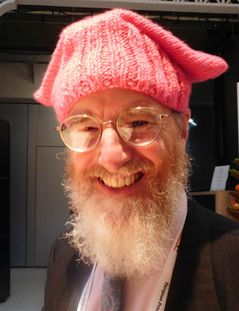The price is right
 "Work is currently somewhere we go, rather than something we do," said Mark Cliffe, the chief economist for ING Group the other week. He was speaking at the Westminster Forum event on intelligent mobility and plans for a Modern Transport bill (PDF).
"Work is currently somewhere we go, rather than something we do," said Mark Cliffe, the chief economist for ING Group the other week. He was speaking at the Westminster Forum event on intelligent mobility and plans for a Modern Transport bill (PDF).
It's when you hear people talk about different modes of transport all in one place that you realize how many of their visions conflict. Just self-driving cars - a particularly magnetic subject - are expected simultaneously to deliver less congestion and more travel. First, the cars can be small pods. Their better safety means they can be lighter, consuming less energy. They can take people door to door, freeing up space, not least from downtown parking. Elderly people, children, the disabled...who can't (or shouldn't) drive now will be able to use cars. Intelligent networks mean that road pricing can be used to balance loads as airlines do.
But how small are these pods? People talk about families hanging out, working, eating breakfast en route. Does a living room/workspace fit in a pod? What about a wheelchair? If you assume that shared cars will appear on demand in whatever form factor suits your needs that day, then fine. But the prevailing consumer ownership trend is very clearly towards bigger vehicles. What's the incentive for pods, particularly if you never have to worry about parking?
What happens to public health if cars go door to door and no one ever needs to walk? How do you keep local shops open if you eliminate their foot traffic from park-and-walk?
Less pollution ought to depend more on how cars are powered than on what drives them: think diesel versus electric. Less congestion seems to depend on two possibilities: the cars don't stay "downtown" but drive back to home base, or the cars are shared. The first case implies that every commuting car does a double journey, which ought to roughly double the peak traffic period. The second, which is basically the scenario of Vernor Vinge's novel Rainbows End could carve giant holes in the automotive industry. Which do you, as a policy maker, favor? How many fewer cars will be needed if everyone still needs to commute to work at the same time? Or do you plonk as many people as possible on trains and use self-driving pods only for the last mile?
It was around then that I refocused on a discussion of big data and public transport. This was when Will Phillipson, the founder and CEO of SilverRail, started talking about big data and AI, and the sophisticated pricing strategies airlines use. Understanding personal and aggregate patterns, he said, will make it possible to proactively send you updated, alternative routes when something goes wrong. "It will be fascinating, though scary,"" he said. My mind raced off after personalized pricing, and then came the sentence I started with, and I thought, "Hang on, that's not fair."
 For one thing, as travel data privacy expert Edward Hasbrouck has written in the context of airlines, personalized pricing is generally anti-consumer: you have no way to tell in advance what a given journey is going to cost, or what it should cost, and therefore no way to prevent discriminatory price gouging (not that Transport for London would do such a thing). At CPDP this week, Hasbrouck gave an example of how this might work in the era of converging data: the airline knows from your Facebook page that your mother is dying and tacks an extra $10,000 onto your personalized ticket price. This possibility keeps getting closer.
For one thing, as travel data privacy expert Edward Hasbrouck has written in the context of airlines, personalized pricing is generally anti-consumer: you have no way to tell in advance what a given journey is going to cost, or what it should cost, and therefore no way to prevent discriminatory price gouging (not that Transport for London would do such a thing). At CPDP this week, Hasbrouck gave an example of how this might work in the era of converging data: the airline knows from your Facebook page that your mother is dying and tacks an extra $10,000 onto your personalized ticket price. This possibility keeps getting closer.
For the first time, it occurred to me that charging people extra to travel in peak times unfairly penalizes the generally lower-paid people for whom work is still and will continue to be "somewhere you go". We saw this emerging class divide in the aftermath of Hurricane Sandy, when a Google employee in upper Manhattan (dry and lit up) could go to work exactly as if nothing had happened even though Google's New York office (dry and dark) was without electrical power and the Chinese restaurant downstairs was closed because its workers (probably commuting from a wet and dark area) couldn't get there. But it is even more true now.
When peak pricing was originally conceived, things were different: banker or cleaner, shop assistant or corporate lawyer, you all had to travel to work and get there at about the same time. Today, the richer end of the spectrum can work at home until peak time has passed. The poorer end of the spectrum gets hit twice: first by peak pricing, second by the fact that housing prices typically mean they must live much further away from their jobs. To make it fairer, personalized pricing would have to take into account the job you do and the necessity of your trip, things that are much harder to quantify, as Cathy O'Neil might say. Since the transport networks' interest is in increasing efficiency and smoothing out the numbers of passengers across the network and the schedule, personalized, ad hoc pricing will systematically and disproportionately impose extra cost on the lowest-paid with the least choice. This is something modern computing systems afford us the opportunity to redress: if we think to do so.
Wendy M. Grossman is the 2013 winner of the Enigma Award. Her Web site has an extensive archive of her books, articles, and music, and an archive of earlier columns in this series. Stories about the border wars between cyberspace and real life are posted occasionally during the week at the net.wars Pinboard - or follow on Twitter.